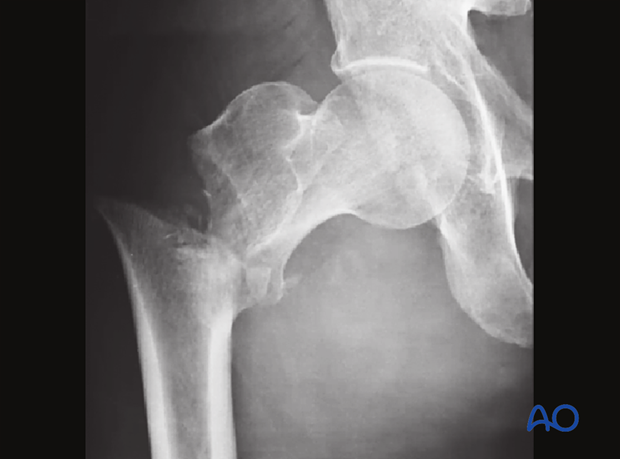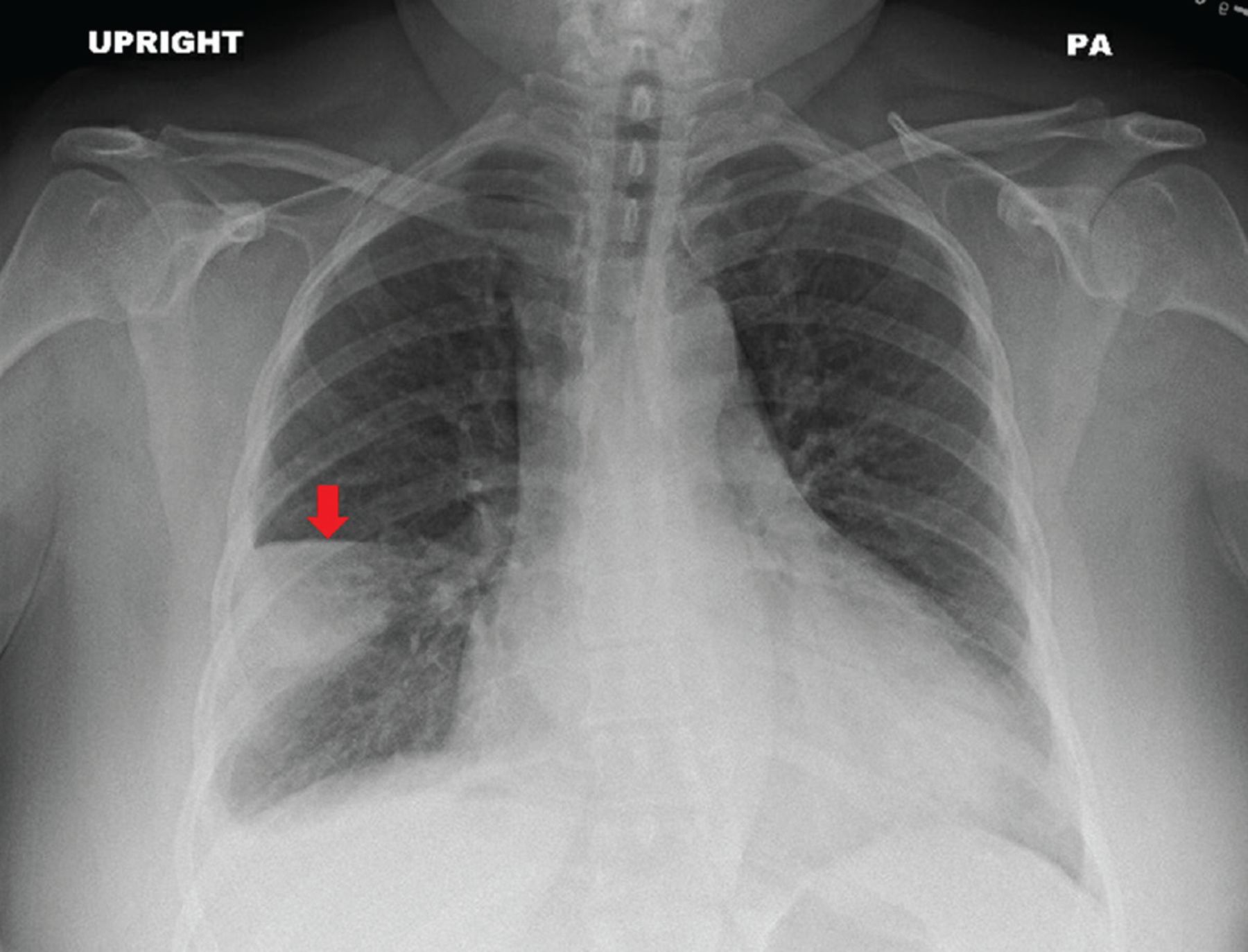A sharp line with no lung markings beyond it—what does this represent?
Pneumothorax
The most common direction of shoulder dislocation.
anterior shoulder dislocation
The most common direction of elbow dislocation.
Posterior
This smooth curve from the femoral neck to the superior pubic ramus should be continuous on AP pelvis; disruption suggests fracture or dislocation.
Sheltons line
A widened mediastinum on CXR can be a sign of this life-threatening vascular emergency.
aortic dissection- 
This nerve is most commonly injured in anterior shoulder dislocations.
Axillary nerve
 40 year old presented with history of elbow pain - sign and common fracture ?
40 year old presented with history of elbow pain - sign and common fracture ?
sail sign
posterior fat pad sign
radial head fracture
what is this fracture called - 
intertrochanteric fracture
In a trauma patient, air under the diaphragm on CXR suggests this surgical emergency.
Perforation
The deformity of the humeral head after repeated anterior dislocations, seen on imaging.
Hill Sach lesion- 
fracture of the coronoid process, radial head, and dislocation is called this triad.
Terrible triad
A fracture of the femoral head with associated posterior hip dislocation is named after French orthopedic surgeon.
Pipkin fracture
A wedge-shaped peripheral opacity with the base toward the pleura, often with a small pleural effusion, suggests this diagnosis.
 hamptons hump - PE
hamptons hump - PE

Posterior shoulder dislocation
This nerve is most at risk in a posterior elbow dislocation.
Ulnar nerve
This artery is at risk in femoral neck fractures, potentially leading to avascular necrosis.
medial femoral circumflex artery
This sign — air-fluid level with a thick-walled cavity
Lung abscess

bankarts lesion-injury of the antero inferior aspect of the glenoid labral complex .
A dislocation without fracture in a child often involves the radial head subluxation, also called this.
Nursemaid's elbow
smooth curve from the femoral neck to the superior pubic ramus should be continuous on AP pelvis; disruption suggests fracture or dislocation.
Shenton’s line